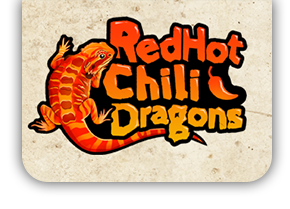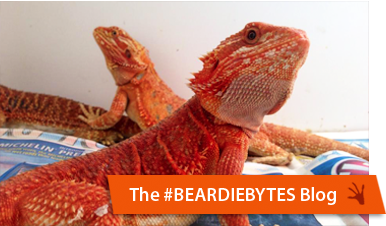Bearded Dragon Morphs
What morph is my bearded dragon?
Bearded dragons come in many colours and morphs. So how exactly can you distinguish what’s what? First let’s provide a little run down on the genetic jargon you’ll probably hear.
Morph – (short for genetic Polymorphism) occurs when two or more clearly different phenotypes (visual mutation) exist in the same population of a species from which the genetic make-up (genotype) determines the outcome.
Het – A recessive gene. The heterozygous genotype looks normal and only the homozygous genotype is a mutant phenotype. Carriers need two copies of this gene for it to show (ex. Hypos, Trans)
Co-dominant/Incomplete Dominant: The heterozygous genotype is a visible mutant phenotype but the homozygous genotype is a different visible mutant phenotype. (ex. Leatherbacks)
Completely Dominant: The heterozygous and homozygous mutant genotypes are the same mutant phenotype.
Okay, okay that’s great but I know you’re saying, that doesn’t really tell me what type of bearded dragon I have. So we can describe bearded dragons in two ways. By their genotype, and by their phenotype.
Phenotype: The appearance type of an animal, in this case directly linked to their colours. These traits are passed on by selective breeding. For bearded dragons we label types of beardies by their colours. Red, yellow, citrus, sandfire, tiger, etc. But these colours are solely based on the names breeder’s gave their dragons. Some of these names help describe what lines these beardies come from, and help link back to whom bred them.
Genotype: The gene type of an animal with respect to one or more known genes. These are often the traits we go by when describing the morph of a dragon.
Did you know?
That bearded dragons in the wild come in many earthy tones of red, yellow and brown, and through selective breeding we now have a large assortment of different morphs and colours.Selective breeding is carefully breeding bearded dragons together with specific traits to produce bearded dragon offspring with desired characteristics.
Types of Bearded Dragons
Normal – a dragon with no other traits such as hypomelanism or translucent.
Hypo (Hypomelanism) – a dragon that visually displays the hypo trait or is homozygous for hypomelansim, characterized by a mutation that results in an absence or reduction of any dark or black/brown pigments in the skin cells, usually very light with clear nails or brighter and more vivid when deeply colored, also can occur in varying degrees. When a dragon is a carrier for this gene but does not show it, we label the dragon as a Het Hypo.
Translucent – a dragon that visually displays the trans trait or is homozygous for translucent, visually characterized by a mutation that causes absence of the opaque or white pigment within the skin cells and eyes, also occurs in varying degrees. When a dragon is a carrier for this gene that isn’t shown, we label the dragon as a Het Trans.
Leatherback– A co-dominant gene, a leatherback has a large reduction in scales all over it’s body, especially it’s back causing it to have a smooth back with no spikes except the sides and head. Because of the lack of the smooth back it causes the colours to become more vivid.
Silkback – The super form of a leatherback. A silkback is created when two leatherbacks are bred together. Silkbacks are scaleless bearded dragons. They are smooth and silky to the touch. They require more care as they tend to have issues with shedding.
Dunner – An Incomplete Dominant trait. The dunner dragon is distinguished by it’s unique pattern of stripes and spots. The scales of a dunner run in every direction causing them to be very rough to the touch. Normal scales of a dragon all run in one direction downward.
Witblit – A recessive trait. The witblit is a patternless morph. Often a witblit will still have muted colour but retain a patternless body.
Zero – A recessive trait. The Zero is a newer morph. A zero is completely patternless and colourless and range from a silvery to white colour.
Paradox – Linked to the trans gene, paradox’s are gorgeous dragons with patches of white/purple/blue spots and sometimes whole sections of the body. They are a rare morph to come by and selective breeding is still being done to determine the chances of producing one.
Silverback- Recessive trait. These dragons are born with their normal colours which fade into grey, patternless hues as they grow older. Their backs are usually silvery grey hues which gives them the name



